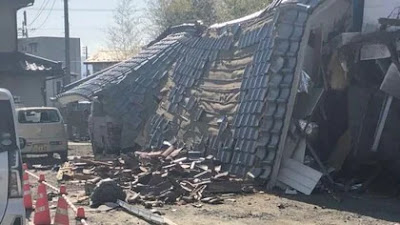It was the Emperor's birthday yesterday (he turned a sprightly 65 - Banzai!), so us common people were given a holiday to celebrate his Imperial Highness's continuing good health and fortune (double Banzai!!). It was also a nice(ish) day here so I decided to skip my usual jog and head for places higher - Muroran dake.
Initially I was thinking of doing the classic Gaynor door-to summit-to door route, but then my inner-55-year-old-self told my outer still-thinks-I-am-35-self to cop the f*** on. It may be a nice day, but it's still winter.
So instead I drove up to Danpara ski-jo and then stomped the two kilometers to the top. I didn't bother with snowshoes which meant I had to posthole through deep snow in a few places. My inner-55-year-old-self should have warned me about that too.
It was a tad windy though some of my fellow summiteers were saying it was a far better day than yesterday. There were in fact a fair few people hiking/snowshoeing/skiing/snowboarding up and down the mountain. Muroran-dake's relatively low elevation (911 meters) and its location on the Pacific coast side of Hokkaido means it gets a reasonable amount of sunny weather in winter and not so much (relatively speaking) snow. This attracts a lot of hikers who want to get their winter trail fix in but without going to the extremes.
And at 55 years of age I have (partially) listened to my inner self and no longer go to the extremes.










.PNG)




